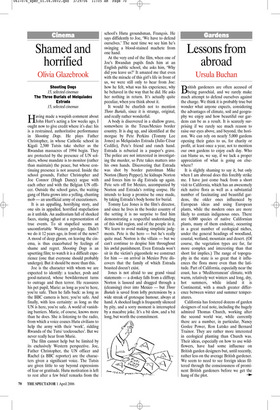Lessons from abroad
Ursula Buchan
British gardeners are often accused of being parochial, and we rarely make much attempt to defend ourselves against the charge. We think it is probably true but wonder what anyone expects, considering the advantages of climate, soil and geography we enjoy and how beautiful our gardens can be as a result. It is scarcely surprising if we rarely see much reason to raise our eyes above, and beyond, the horizon. We can rely on nearly 5,000 gardens opening their gates to us, for charity or profit, at least once a year, not to mention our own gardens to enjoy each day. Who can blame us, we say, if we lack a proper appreciation of what is going on elsewhere?
It is slightly shaming to say it, but only when I am abroad does this forcibly strike me. I have just come back from a short visit to California, which has an awesomely rich native flora as well as a substantial number of fascinating and beautiful gardens, the older ones influenced by European ideas and using European plants, while the modern ones are more likely to contain indigenous ones. There are 6,000 species of native Californian plants, many of them endemic, occurring in a great number of ecological niches, under the general headings of woodland, coastal, wetland, mountain and desert. (Of course, the vegetation types are far, far more complex and interesting than that short list implies.) The range of topography in the state is so great that it influences the flora more even than the latitude. Part of California, especially near the coast, has a ‘Mediterranean’ climate, with warm, relatively wet winters and long, dry, hot summers, while inland it is Continental, with a much greater difference between winter and summer temperatures.
California has fostered dozens of garden designers of real note, including the hugely admired Thomas Church, working after the second world war, while currently there are a number, in particular, Nancy Goslee Power, Ron Lutsko and Bernard Trainor. They are rather more interested in ecological planting than Church was. Their ideas, especially on how to use wildflowers, have had some influence on British garden designers but, until recently, rather less on the average British gardener. We seem to need to see foreign ideas filtered through the consciousness of prominent British gardeners before we get the hang of the plot.


























































































 Previous page
Previous page